On the last weekend in March 2022 about 80 SEANA members gathered with local Portland Field Nats at Portland Bay Lodge, a comfortable and peaceful school camp facility 9 kilometers East of Portland, where cabin, lodge room or campsite accommodation was on offer. After the catered evening meals, Gavin Prentice of GHCMA explained the ecology and the process which brought the Discovery Bay Ramsar site into existence, John Sherwood, retired professor, gave a keynote address on local coastal hydrology and geology and locals Martin Boyer and Garry Kerr spoke to the videos they had produced on the ecology of the Surry River and the weed problems created by white settlement in the area.
7 guided and 6 self guided full and half day excursions occupied the participants. Reports of the guided tours with photos have been written separately. Many expressions of thanks for a thoroughly enjoyable weekend and appreciation of our interesting and beautiful natural landscape were received.
This excursion visited Long Swamp which stretches 15km behind the dunes of Discovery Bay.
While walking along the beach we saw a range of birds – Silver Gull, Kelp Gull, Pied Oystercatcher, Hooded Plover, Double-banded Plover and Sanderling.
The swamp had been drained in the early days of settlement so that the land could be used for grazing stock. Mark Backman explained enthusiastically how Nature Glenelg Trust worked with land managers to block the drain leading to the ocean and restore the wetland area. While we were there, we saw a pair of Magpie Geese flying over swamp.
In the afternoon we visited Pick Swamp in South Australia on the western side of the Glenelg River. 130 hectares of drained farm land has been permanently inundated and is now included in the Piccanie Ponds Karst Wetlands Ramsar site listed in 2012. Several rare species of flora and fauna are now using the Swamp including Australasian Bitter, Dwarf Galaxias, Yarra Pygmy Perch and Swamp Greenhood. The bird list for the Swamp has grown to 180 species. Some of the birds seen during our visit were Australian Hobby, Black Duck, Musk Duck, Shelduck, White Ibis, Straw-necked Ibis, Magpie Geese.
John Gregurke
Discovery Bay
On Saturday afternoon Braydon led us around the Budj Bim World Heritage site called Tae Rak, also known as Lake Condah in the stony Lava flow country. We were shown the new eel aquarium, tasting kitchen and retail area which will not open to the public until later this year.
We were then given a history of the draining of Tae Rak by the white settlers and refilling by the current indigenous owners to a level agreed with the neighbouring farmers. The result is a very large shallow vegetated ephemeral wetland which supports a huge population of birds and freshwater fauna. We viewed this from a newly constructed boardwalk.
We then headed past the weir to the currently dry narrow creek bed in a wider winter floodplain which has been used for millennia by the indigenous population to trap eels in woven
basket traps and inspected the lava sinkhole adjacent which formed a useful holding pond for the eels caught. There were many such structures throughout this landscape along with dwellings and cooking and smoking areas which were used seasonally.
After assembling at the Portland Bay Lodge, our group headed off in convoy to park in the Marina Carpark and await meeting our captain Kevin Treloar. Kevin promptly appeared as did his ship-mate James and ushered us aboard the vessel Timaru for our trip out to Lawrence Rocks. Before starting out Kevin introduced us to the safety instructions for the trip, demonstrated the wearing of the life-jackets (donned by some of us) and appointed me the person responsible for keeping an eye on any person who went overboard (none, fortunately). We departed port around 9.30 am.
The trip out was smooth with a few large, regular swells – but nothing to make any of us feel queasy. It was a glorious morning to be on the water – clear skies, a mild, comfortable temperature and very little wind. James pointed out that it was low tide as evidenced by the breakers over the inner and outer reefs. A few birds were seen on both the outward and return journey including Masked Lapwings, Crested Terns, Little Pied Cormorants, Silver Gulls, Pacific and Kelp Gulls.
As we arrived closer to Lawrence Rocks, the water became very choppy. We watched as the waves crashed through the opening between the rocks – with some very large waves splashing up and over the rocks. Australian Fur Seals were variously lolling on the rocks, playing about in a group in the water close to the rocks and close to the boat and a small group of young seals played in a pool on the rock edge. James told us that the seal pups stayed on the rocks for about a year before entering the sea, they gained their strength by playing in this pool.
Higher up and on the top of the rocks was a large number of Gannets with both Australasian and Cape Gannets present (I noticed a Cape Gannet after reviewing my photographs) and many immature birds were seen amidst the ever-active adult birds. The Cape Gannet is very similar to the Australasian Gannet but has a black strip beneath its beak that extends down its neck – a black gular strip. The immature birds had dark plumage speckled with white. Other birds on the rocks included Pied Cormorants, Little Black Cormorant, Black-faced Cormorant and Kelp and Pacific Gulls. One member of the group spied a bird of prey but was not able to put a name to it.
Kevin pointed out the Saltbush high on the larger of the rocks and also the one very stunted tree close to the summit on the same rock – discussion pondered its species identity.
We returned to port via the old wharf and noticed the large group of Black-faced Cormorants on the rocks. A pair of Masked Lapwings were also nearby. All in all, it was a very pleasant and interesting excursion.


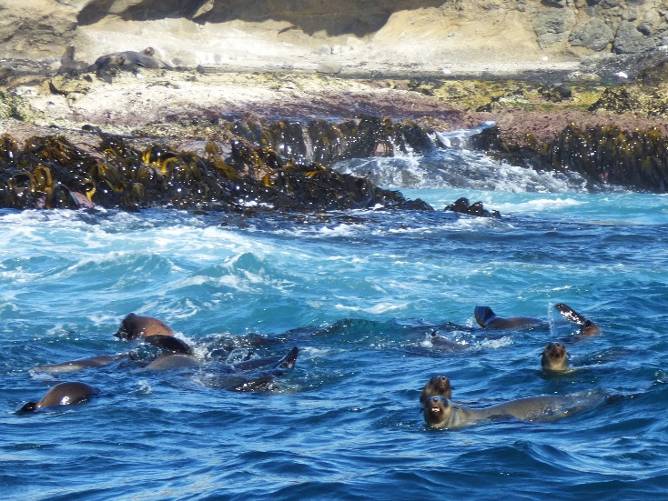

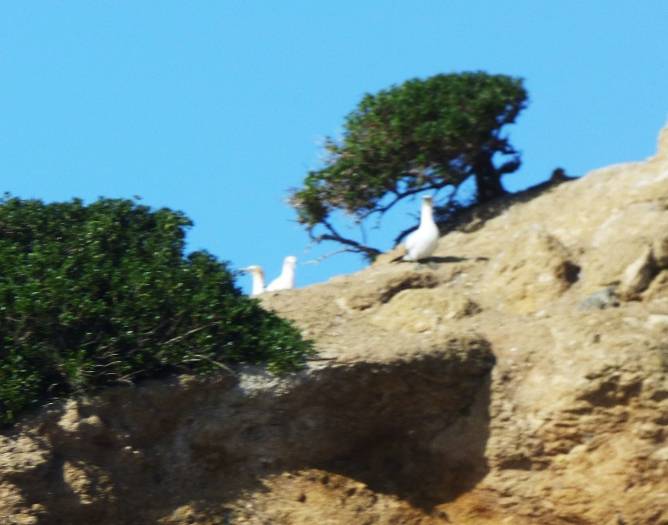
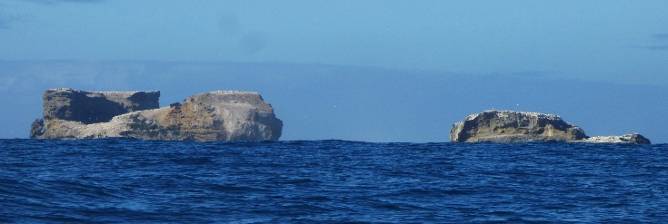
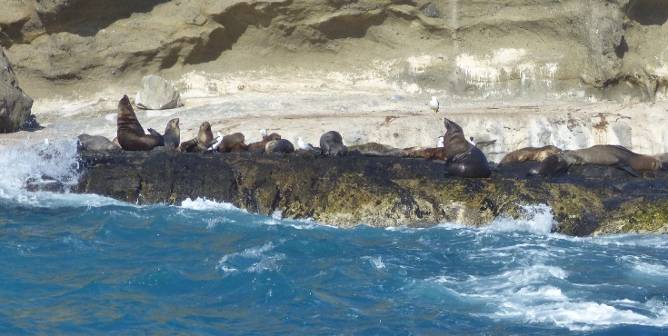
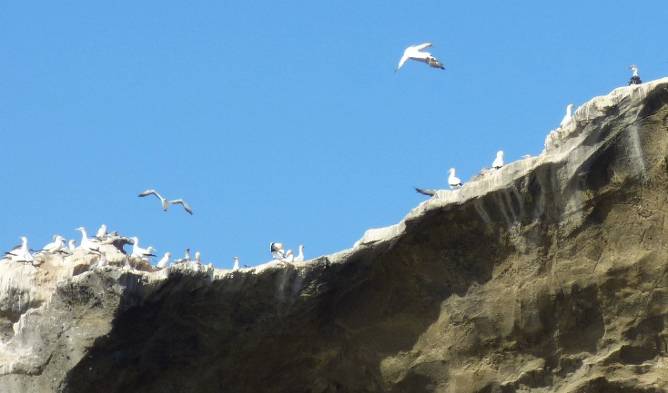
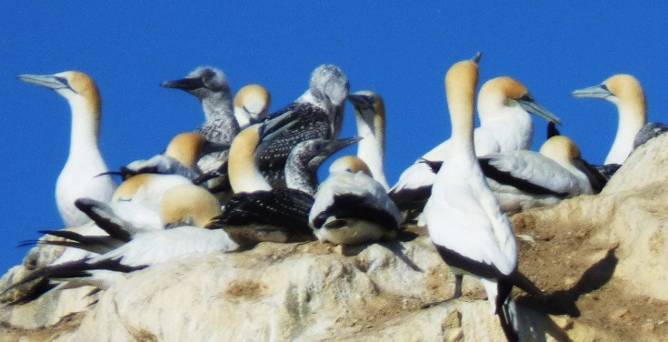
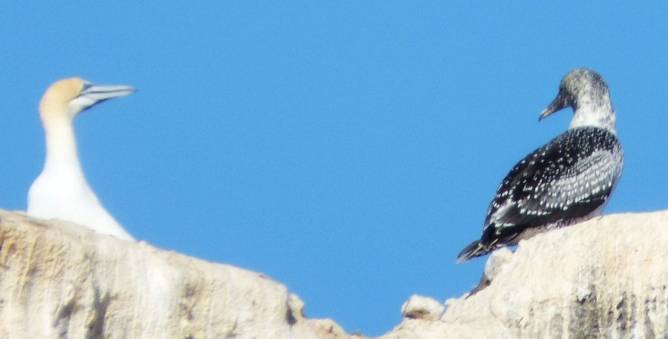


On Saturday, 17 gathered at Heywood Golf Course carpark & noted the general vegetation, discussed the control burn regime because a notice was on a nearly tree and noted a large Messmate Stringybark (Eucalyptus obliqua) clearly older than European settlement in Australia. We then looked at Wasp orchid (Chiliglottis reflexa) leaves, and Mitchell’s Wattle (Acacia mitchellii) amongst other wet sand vegetation species. Interest and research online was sparked by the discovery of a very tiny sundew –Drosera pygmae. Portland Field Nats had been musing on this plant for some months but are not proficient with online research yet, so we were thrilled to get a definitive answer.
We then walked through a damp sand heathland with old growth Grass Trees (Xanthorroea australis) and noted Tassel Rope-rush (Hypolaena fastigiata) before finding dozens of Fringed Hare-orchids (Leporella fimbriata) in bud.
The Sunday excursion had the time to also visit Duck Orchids (Caleana major) in bud, Forked Sundew (Drosera binata) and Scrambling Coral Fern (Gleichenia microphylla).
The birders were delighted with their bird list which included the Scarlet Robin, White-throated Tree Creeper and Rufus, Golden and Olive Whistlers.
Our group met for departure at 9.15 am from the Portland Bay Lodge. After attaching ribbons to our vehicles, we departed north out of the camp as a 7-vehicle convoy with Bob leading in the front vehicle. We were only on the road for a few seconds before realizing that we didn’t have 7 vehicles. One of the drivers had followed the wrong convoy out of the camp for a short distance. We soon found the group waiting further along the road for us to catch up to them. From then on we made sure we followed strict convoy rules, and no further mishaps occurred.
Bob led us through his very familiar territory of the forest, one that his family had generations of engagement with in the forestry industry. It was good to have Bob’s personal recollections of past forestry husbandry practices and to compare it with and contrast it to the current DELWP management. There was much in the modern management that did not match up to previous care of the forest – this we could all see in the recent supposed cool burns of large sections of the forest where trunks were scorched up to the canopy and top branches were losing their burnt leaves to the forest floor. Except for the disappointment of seeing poorly-kept sections of the forest, there were many more areas that delighted us and Bob added to the enjoyment by relating information and stories specific to each site we visited.
We stopped first by a Messmate (Eucalyptus obliqua) forest that was all uniform age in growth – this, Bob told us, was because of the foresters following the directions from a Canberran expert who convinced the foresters that it was better to cut down all trees to ensure an even crop of trees. The result now 80 years later is a forest of no old growth trees and with much less biodiversity than others not treated this way.
Our second stop was to allow a short walk to Cut-out Dam. This dam was created to provide water for the bullocks involved in the forestry industry before the use of motor vehicles. The dam was hand dug and then shaped by upright planks – and still in place today. Here we had out first encounter with a leech – one that did not attach but was seen to be very actively seeking anyone in our group. Native nettles and Fishbone Water-ferns (Blechnum nudum) lined the walk.
We stopped at Surry Ridge Picnic Area for morning tea and a walk around the Hodgetts Loop Walk. Bob showed us the memorial table in honour of the late Doug Phillips – a most remarkable Portland Field Naturalist. The walk was very refreshing with many birds seen and heard (Sulphur-crested Cockatoo, Crimson Rosella, Superb Fairy Wren, Grey Shrike Thrush, Yellow Robin, White-throated Tree-creeper, Brown Thornbill), a frog in the creek – Brown Tree- frog, some fungus recorded (Bracket Fungus Trametes versicolor, Beefsteak Fungus – Fistulina hepatica, a Cortinar and a Lepiota) and a view of Bob’s family’s sign with tall Blackwoods (Acacia melanoxylon) nearby. Janet also saw a mammal high on one of the trees scurry back into a hollow as we approached – possibly a juvenile Ring-tailed Possum.
We travelled along the T and W Rd, crossed the Fitzroy River and turned into Jackass Fern Gully for lunch. During this stop, Pat discovered something wet on her lower back – a leech from the previous stop had made its mark. Peter helped rid her of this pesky animal. Sightings of a Scarlet Robin, Golden Whistler, Wedge-tailed Eagles (a pair) had everyone up with their binoculars. Pied Currawongs were heard. Bob led us through a Poa lined track to the fern gully with a viewing platform and, further along the track, access to the fern-shaded trickle of the Fitzroy River. There were many Soft Tree-ferns (Dicksonia antarctica) as well as Austral Bracken (Pteridium esculentum), Maidenhair Fern (Adiantum aethiopicum) and Fishbone Water-ferns. As we returned to the picnic ground, Catherine found a leech crawling up her socks – it was dispatched quickly.
From the Jackass Picnic Ground, Bob led us along Mt Deception Rd where the forest consisted of Messmate (Eucalyptus obliqua), Manna Gum (E. viminalis), Blackwood (Acacia melanoxylon), Cherry Ballart (Exocarpus cupressiformis) and possibly some Applejack (E. Splendens – once there were many of these trees). We turned left onto Heath Road and stopped at the boundary of Cobboboonee NP and Lower Glenelg NP to see large areas of heath with Allocasuarina sp., Silver Banksia (Banksia marginata) in flower and with some fasciated (abnormal leaf-bud formation) buds, Melaleuca sp., Leucopogon sp. in flower, Flame Heath (Stenanthera conostepioides) in flower and many more varieties of plants. The road here was lined with Purple Flags (Patersonia sp.). Overhead, we saw Yellow-tailed Black Cockatoos fly passed.
Our second last stop was for a 30-minute walk along a designated Nature Trail that link with the Great South West Walking track. Although the track was dry, we saw evidence of its usual damp/wet condition with tall grasses of Gahnia sieberiana arching over the track, Melaeuca sp. and Scrambling Coral Fern (Gleichenia microphylla). On a higher drier section of the track we came across the tiny greenhood that had been seen yesterday – the Red-tip Greenhood (Pterostylis sp. aff. parviflora/syn. clivosa). Towards the end of the track we came across a very colourful butterfly that settled on one of the sedges (Carex sp.). Its body was black and the wings also black but with large yellow spot on each forewing as well as blue circles on the forewings and red circles on the hind wings – possibly a Varied Sword-grass Brown (Tisiphone abeona). A large fungus (Amanita sp.) and another leech – this time attached on Andrew’s arm as he was photographing the fungus completed this walk.
Our last stop was to take a short walk to Stringy’s tree, a very large Messmate estimated to have grown from seed around the time of Portland’s settlement by the Henty Brothers in 1834. It was saved from the timber industry by H Aldridge – a forest overseer of the forest from 1930 to 1968. We also observed two more orchid species in flower along this track – Parsons Bands (Eriochilus cucullatus) and Hyacinth Orchids (Dipodium sp.). One spent Hyacinth Orchid stem had a large seed pod hanging from it.
At this point we thanked Bob for his interesting and comprehensive tour of the forest and for sharing his family’s engagement with the forest. Everyone left in their own time. The tour was very interesting and enjoyed by all, however, travellers behind the leader did have to contend with the dust that was thrown up by the vehicles in front – a bit of rain overnight would have settled it. They were pleased to head off not in convoy.